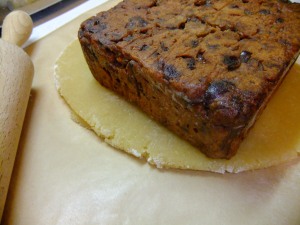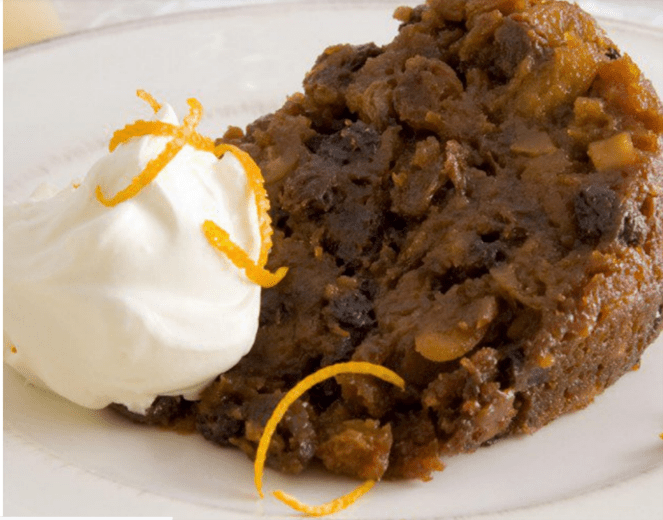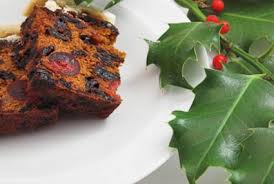
Apr 8, 2014 | Anna's Best Recipes, Breads, crackers, pancakes & wraps
This is lovely bread with a soft golden brown crust. It rises as well as any wheaten soda bread and looks and tastes pretty similar. As I’m coeliac, when friends and relatives come to visit, I make this bread and we can all eat the same. Everyone seems to like it. You could use this mixture for scones too, by placing the mixture in very well-oiled muffin tins instead of a loaf tin.
If you want to make a bread with fewer ingredients, check out my oat bread, flax bread and quinoa bread recipes.
Makes 1 loaf 11cm x 22cm
325 ml/generous 1½ cups unsweetened additive-free non-dairy milk (e.g. coconut, almond, hemp). For dairy eaters you can use buttermilk or kefir
25g whole linseeds (also called flax seeds), soaked 2 hours or overnight in the milk above
75g millet flour (make this by blitzing millet flakes in the food processor) or potato flour
150g brown rice flour
75g millet flakes
25g rice bran
½ level tsp natural sea salt (eg. Atlantic/Maldon/Himalayan – other salts contain harmful additives)
1 rounded teaspoon bread/baking soda (ideally free from toxic aliminium, sometimes listed as flow agent or anti-caking agent – health stores sell good quality bread soda)
1 large organic egg, beaten or if avoiding egg use No-Egg Egg Replacer and make up according to manufacturers instructions
3 tbsp extra virgin olive oil or virgin macadamia oil
Optional: 1 tbsp sesame or poppy seeds to sprinkle on top
Tinfoil
1 loaf tin (about 1250ml) – this common size is about 11cm x 22cm x 8cm
1. Before you start, remember to soak the whole linseeds for 2-3 hours or overnight in the buttermilk. This is crucial, otherwise the bread will not bind together.
2. Preheat oven to 190C/fan 175C/375F/Gas 5
3. Grease and bottom-line a loaf tin with baking parchment/silicon paper
4. Sieve the flours into a bowl and add the other dry ingredients and mix well.
5. Pour off a cupful of the buttermilk and reserve. Add the rest of the buttermilk with the flax (linseeds), oil and beaten egg to the dry ingredients.
6. Add enough of the reserved cupful of buttermilk to make a thick batter (sometimes the mix may take more liquid than at other times depending on the absorbency of the dry ingredients). The mixture should be soft enough to pour into the tin (a bit wetter than queen cake mixture). If you are using sesame or sunflower seeds, sprinkle them on top now.
7. Bake for about 1 hour. Test after 50 mins with a metal skewer to ensure that it is done in the middle (the skewer will come out clean if it is done). The bread will also shrink away a bit from the sides of the tin when cooked.
8. If the bread is getting too brown during baking, cover with a sheet tin foil.
9. Turn onto a wire tray to cool.
Variation:
You could also use buckwheat flakes or quinoa flakes instead of millet flakes. Millet, rice, quinoa and buckwheat are all naturally gluten-free.
* although beneficial nut and seed oils are damaged by baking, whole linseeds/sesame seeds are too small for the body to break down. This means they pass through the digestive system without their heat-damaged oils being digested either. The soluble fibre in the linseeds does you good by absorbing water and emitting a gell that provides food for your body’s beneficial bacteria to help your health.
Why this bread is better for you:
This bread steers clear of the main four food allergens I encounter in my nutritional practice: gluten, dairy, yeast, and egg. Whether you are intolerant/allergic to it or not, gluten binds to N-acetyl glucosamine in our gut and inactivates this healing nutrient. That’s one reason why people adopting a gluten-free diet often get relief from digestive problems. Food allergies are usually easy to detect because the symptoms come on within 2 hours. This is different from food intolerances, where symptoms can take up to 48 hours to appear. Food intolerances are a sign that your small intestine is a bit damaged and so undigested foods are getting into your bloodstream and causing your immune system to “over-react”. Food intolerances are fixable by avoiding the food for a period and healing your gut using nutrition.
Millet is a grain that’s rich in magnesium, which you need to keep your mood chilled and your bowels and liver working well to remove toxins from your body. Brown rice flour and millet are also of course, wholegrains, so they contain chromium and B vitamins, also needed for mood, energy, and great skin.
Milk is a food that is great for stimulating rapid cell proliferation in babies and young animals. Unfortunately it’s not such an appropriate food for adults because research suggests it can fuel serious diseases of the breasts and prostate. .Although we do need calcium in our diet, non-dairy sources are more beneficial. Dark green leafy veg, nuts & seeds (especially almonds and ground sesame seeds), bone-in tinned salmon and sardines and fermented soya products contain high levels of calcium.

Dec 2, 2013 | Anna's Best Recipes, Desserts & drinks
I usually only post once a week but as Christmas is coming and I don’t want all you healthy eaters or those with food intolerances to feel deprived I’m stepping up the pace for a week or two. This pudding, adapted from the recipe in Rose Cousins “Cooking Without”, is fabulous. It’s lighter in texture than standard pudding and is naturally gluten-free and dairy-free. If you have a problem with eggs, it can also be made egg-free. These quantities make 3 puddings each serving 4 people. I make these in advance and stick them in the freezer until Christmas Eve. On occasion I have eaten the last Christmas pudding at Easter and its still lovely…
Don’t forget to check “larder & shopping” section for unusual ingredients
1 portion Xmas Cake recipe (posted separately last week)
20ml/2 level dsp gluten-free baking powder (GF baking powder is usually free from nasty anti-caking agents made from aluminium so is much healthier)
2 large carrots, finely grated
225g cooking apples, peeled & grated (eating apples don’t give a good texture)
A little oil (eg light olive oil, coconut oil) to grease your pudding basins
Greaseproof or silicon paper to cover the pudding basins with, and string to secure
Ceramic pudding basins
1. Mix the Christmas cake as per recipe.
2. Mix in carrots, apples, baking powder.
3. Divide into greased pudding basins, depending on the size of pudding you require.
4. Steam or pressure cook. The 4-person pudding takes 3 minutes in a pressure cooker, 2 hours over boiling water or (if you must) 12 minutes in a microwave.
To reheat your (thawed overnight) puds when you need them:
Steam for 1 hour or microwave (if you must) for 5 minutes on high. I have to admit to heating my puds in our seldom-used microwave just to save hassle on Christmas day. Microwaving causes changes to food that damages your DNA* but when it’s only once a year I think, what the hell…
Why this recipe is better for you:
Although the large quantity of (naturally sugary) dried fruit means this pudding can never be a vitality enhancing food it IS better for you than the normal one. It is free from refined sugar. It is also aluminium-free (as it uses GF baking powder), good news for your long-term brain and digestive wellness. Cooking apples are a rich source of pectin, which helps mop up and neutralise toxins in your gut. Pectin is a soluble fibre that feeds beneficial bacteria. Carrots are a rich source of beta carotene, which helps give your skin a beautiful, natural golden glow. Beta carotene from orange/red foods in your diet also helps prevent against acne and digestive disorders. Using macadamia, or even light olive oil for cooking means your pudding is not laden with toxic trans fats. Trans fats are generated when polyunsaturated oils (eg. “vegetable” oil, sunflower, rapeseed and other nut/seed oils) are processed by the manufacturer or heated by you.
*Damage to DNA initiates premature ageing, cancer, ME/chronic fatigue syndrome and more. That is one of the reasons why microwaved food is never a health-enhancing choice.

Nov 27, 2013 | Anna's Best Recipes, Cakes, biscuits & bars
We love this cake which I adapted from the recipe by Rose Cousins, swapping in cooking oils that are better for you. It’s naturally free from gluten and dairy. I made this once, years ago, and it was so delicious we stopped making the “normal” family Christmas cake. Because of the dried fruit, this cake, like all fruit cakes is high in (natural) sugars so it’s never going to be a vitality boosting food. But sometimes, who cares!! These amounts make a 15cm (6”) square cake. If you like a larger cake, use a 18×18 cm square (7”) tin and twice the quantities of ingredients below. You will need to increase the cooking time by around 30 minutes. If you go through the whole process of the greasproof and brown paper your cake will not burn.
Don’t forget to check my larder & shopping section for any new/unusual ingredients
165g stoneless dates (not medjool)
115ml virgin avocado oil, macadamia oil or light olive oil
55g rice flour
55g coconut flour
55g tapioca flour
165g organic un-sulphured sultanas
165g organic un-sulphured raisins
55g organic un-sulphured currants
55g natural glace cherries (without red food colouring), rinsed in hot water to remove sugar syrup, dried, and halved
OR 40g dried sour cherries soaked overnight in boiling water to help them plump up
28g ground almonds
1 heaped tsp mixed spice
3 large eggs (or use Orgran No Egg Egg Replacer from health shops for an egg-free cake – whisk the egg replacer with water before adding to the other ingredients)
Optional: grated rind of 1 unwaxed lemon and orange, organic if possible
Brown paper and oil for greasing
Silicon or grease proof baking paper
A 15cm (6″) square baking tin (or 17.5cm/7″ round tin)
For the almond paste (marzipan) topping (this is not egg-free!):
1 quantity of almond paste from my recipe (posted separately)
1 egg white, lightly beaten
Gluten-free* icing sugar or finely ground xylitol or erythritol Ie.g. NKD Living brand) for rolling
*most icing sugar is GF but do check labels if you need to avoid gluten
1. Line the base and sides of tin with brown paper and greaseproof paper, allowing the brown paper to come at least 2” above top of tin.
2. Wrap an outer collar of brown paper around the tin to come up as high above the tin as the tin itself. Secure with pins or paperclips. This outer collar and all the layers inside stops your cake burning at the edges before it’s cooked at the centre.
3. Chop dates small and place in a pan with 145ml water
4. Simmer on a low heat for 10 mins until the dates are soft. Cool.
5. Preheat oven to 170C
6. Process/beat together dates, oil, almonds, spices, eggs, flours until well blended.
7. Stir in the fruit, mix well by hand. Don’t beat or you will get a cake like concrete.
8. Place in the lined, greased 6” baking tin
9. Bake for 30 mins at 170C
10. Then lower the oven to 145C for another 45 mins. Test with a needle – if it comes out clean, the cake is 100% done.
11. Allow to cool in the tin, then remove and store, still wrapped in paper, until ready to use (or cover in marzipan). I am posting my marzipan recipe separately and will be uploading pictures soon…
To cover the cake with marzipan (almond paste)
- When you are ready to cover the cake with almond paste, remove the paper from the cake. Put a sheet of greaseproof/silicon paper on the work surface and dust with some gluten-free icing sugar or finely ground xylitol.
- Roll out about half the almond paste on the paper: it should be a little less than 1cm thick. Brush the top and sides of the cake with lightly beaten egg white and put the cake, sticky side down, on top of the rolled out almond paste.

Covering the cake in almond paste
- Give the cake a thump to make sure it sticks and then cut around the edge. If the cake is a little “round shouldered”, cut the almond paste a little larger.
- With a palette knife press the extra almond paste in against the top of the cake to fill any gaps.
- Measure the circumference of the cake with a piece of string. Roll out 2 long strips of almond paste to half that length: trim both edges to the height of the cake with a palette knife.
- Brush both the cake and the almond paste lightly with egg white. Press the strip against the sides of the cake: do not overlap or there will be a bulge. Use a straight-sided glass to even the edges and smooth the join.
- Rub the cake well with your hand to ensure a nice flat surface. Keep any leftover almond paste keep for later to make chocolate-dipped marzipan balls with (to be posted in the next few weeks!).
- Let the marzipan dry out for at least 2 days before icing the cake as normal (we don’t even eat the icing, we just break it off and eat the rest, but it looks great!)
Why this cake is better for you:
Macadamia nut oil is used for this delicious cake as it can be cooked at temperatures up to 200C without producing harmful trans fats. Trans fats are contained in all polyunsaturated supermarket oils and in any polyunsaturated oils that have been heated. Damaged (trans) fats damage and age your body. So if you want to have great skin, a healthy heart, and tip top digestion, it’s a good idea to phase them out of your diet. Ready meals, takeaways, most cooking oils, and shop-bought biscuits and confectionery are sources of trans fats. The 2 oils that are best for cooking are virgin coconut oil and virgin macadamia oil. Most other oils should be eaten cold-pressed and raw. Extra virgin oil can be added to stews and soups, or to finished dishes, provided you don’t fry with it. If you want to know more about oils that help your health, read “Fats that heal Fats that kill” by Udo Erasmus (more details on www.annacollins.ie). Unsulphured dried fruit does not use sulphur dioxide, a preservative. Sulphur dioxide is acted upon by sulphur-reducing bacteria in your bowel (if your bowel bacteria is imbalanced) and this can cause bloating, gas or headaches if you are suseptable.
Making marzipan with xylitol instead of almond paste makes it kind to your teeth. Xylitol inhibits the bacteria that cause tooth decay from sticking to your teeth. Xylitol is also lower GI than sugar, so is kinder to your body.




